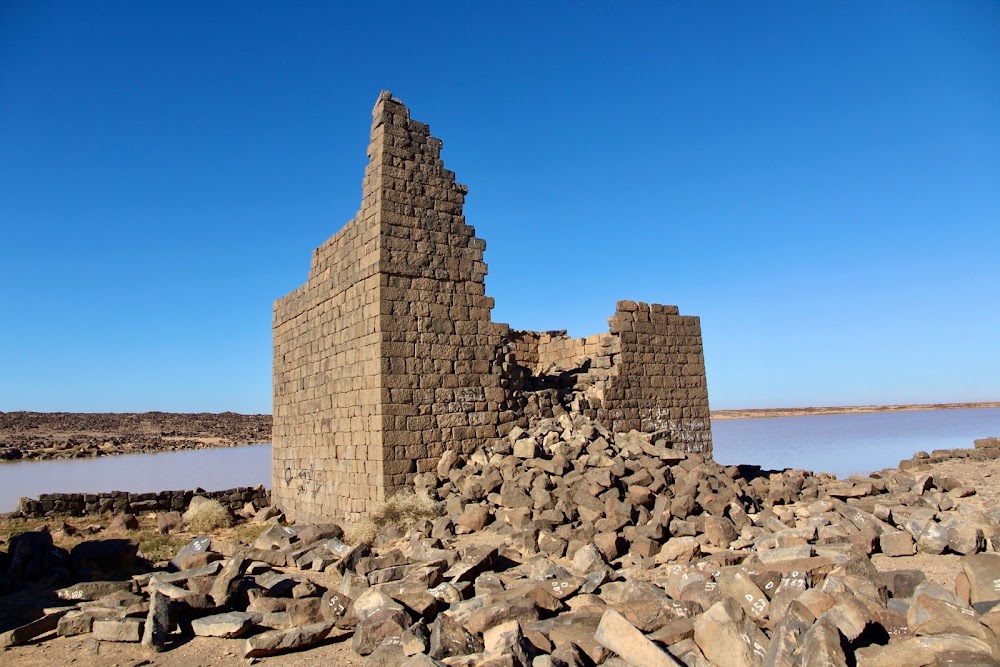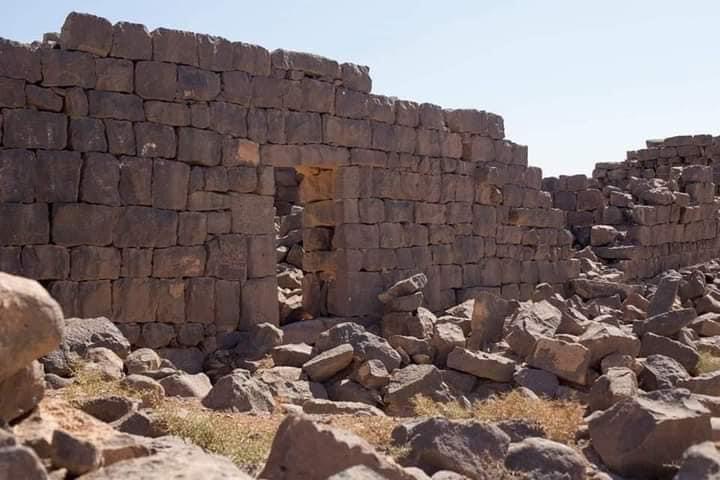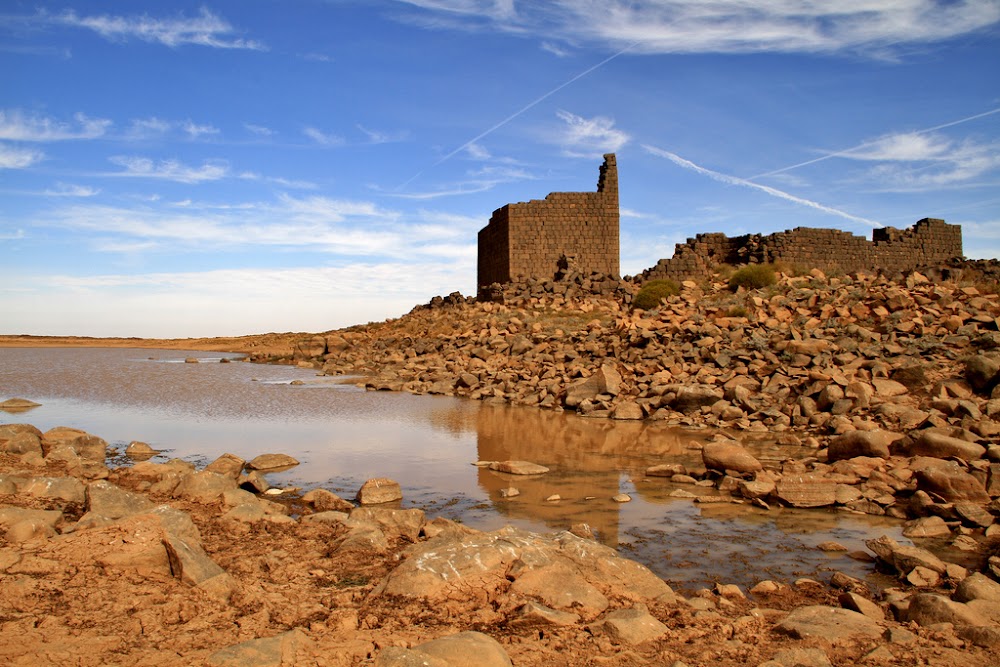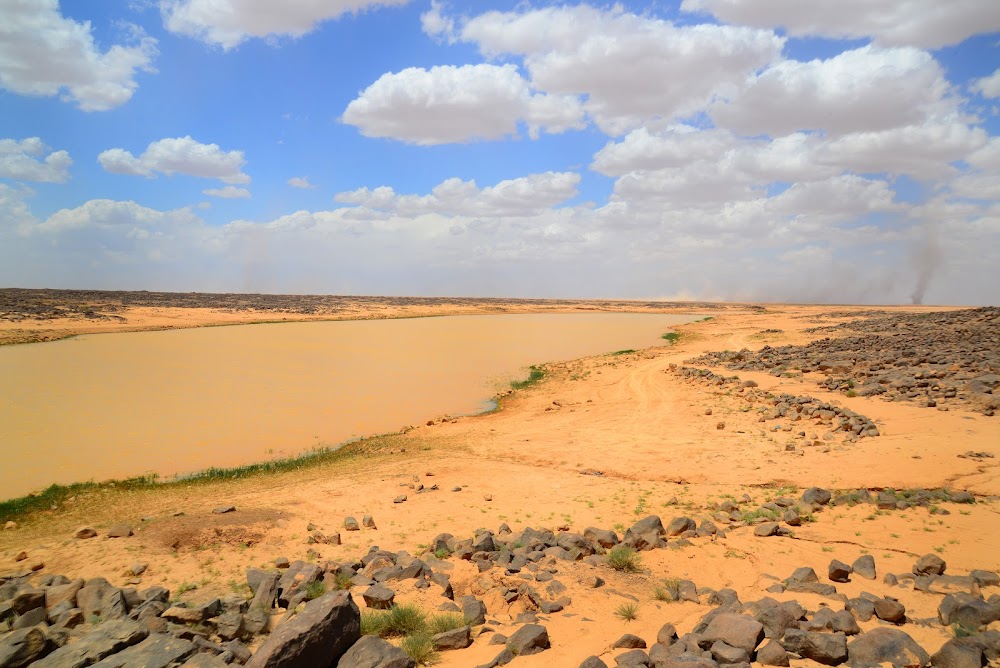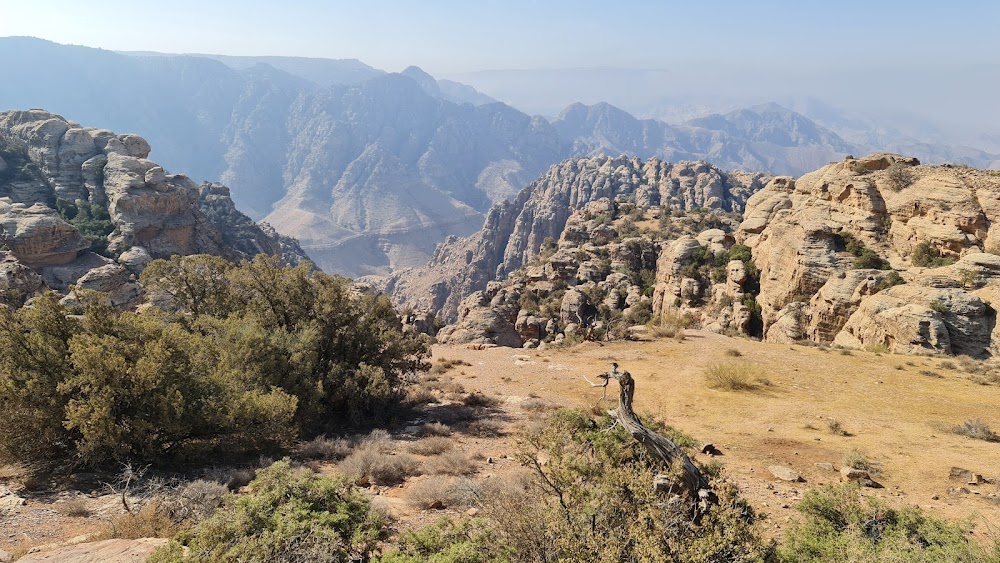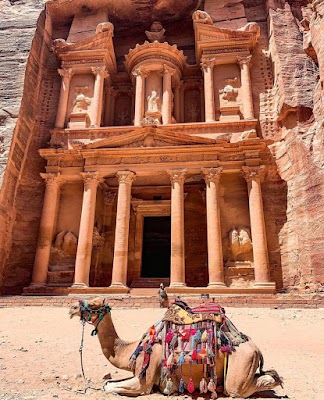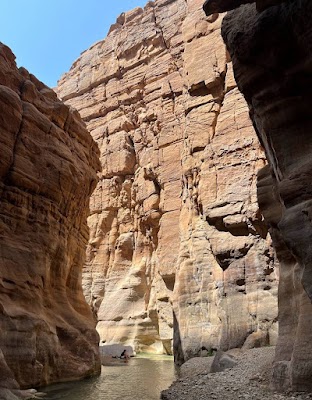Burqu (برقع)
Overview
Discovering Qasr al-Burqu: A Gem of Umayyad Heritage
Nestled in the remote expanses of eastern Jordan, near the city of Tafilah, lies the captivating desert castle known as Qasr al-Burqu. This exquisite stone fortress is a remarkable relic from the Umayyad period, dating back to the early 8th century. Originally built as a rest stop and hunting lodge for the Umayyad caliphs, it showcases the architectural mastery and intricate design sensibilities of its time.
Architectural Marvels: Materials and Design
The construction of Qasr al-Burqu utilized local materials such as basalt and limestone. The enduring basalt from the surrounding desert provided a solid foundation and robust defensive structures for the castle. In contrast, the more decorative elements, including intricate carvings and friezes, were crafted from the more malleable limestone. This combination not only ensured the fort's resilience but also highlighted the aesthetic interplay between rugged functionality and artistic beauty.
A Strategic Oasis: Location and Functionality
An essential feature of Qasr al-Burqu is its strategic location beside a large, perennial spring-fed pool, which served as a vital water source in the arid landscape. This pool not only made the castle a desirable hunting lodge by attracting game but also fulfilled the practical needs of weary travelers. The surrounding vegetation, nourished by the water source, enhances the oasis-like effect that adds to the fort's charm and historical significance.
Umayyad Architectural Style: Layout and Aesthetic
Stepping through the main gate, visitors encounter a symmetrical layout characteristic of Umayyad architecture, with rooms organized around a central courtyard. This courtyard likely served as both a communal space and a cool refuge from the harsh desert sun. The walls of the rooms and halls are adorned with exquisite carved stonework and frescoes, featuring geometric patterns, floral motifs, and possibly hunting scenes, all designed to impress both residents and guests alike.
Cultural Synthesis: Roman, Byzantine, and Islamic Influences
Qasr al-Burqu also illustrates the influence of earlier Roman and Byzantine architectural styles, evident in the arches and domed ceilings. The Umayyads skillfully blended these elements with Islamic art, creating a unique hybrid style. This fusion not only underscores the Umayyads' appreciation for beauty but also reflects their political and cultural dominance in the region during that era.
Ingenious Engineering: Details that Matter
Even the smallest details within Qasr al-Burqu encapsulate its grandeur. For instance, the stone chutes and channels ingeniously designed to gather rainwater into the pool demonstrate an advanced understanding of hydrology and engineering. Furthermore, the fortress's robust walls and towers showcase how defensive mechanisms were seamlessly integrated into its aesthetic layout, ensuring safety without compromising elegance.
Preservation Efforts: A Commitment to History
Over the centuries, Qasr al-Burqu has withstood the harsh elements of the desert. Contemporary preservation efforts focus on maintaining its structural integrity while safeguarding the ornate carvings from wind erosion. These conservation projects often involve collaboration between local experts and international historians, ensuring this magnificent piece of history remains vibrant for future generations.
A Testament to Ingenuity: Experience Qasr al-Burqu
Today, Qasr al-Burqu stands as a testament to the ingenuity and sophistication of the Umayyad dynasty. Its well-preserved relics offer a tangible connection to a time when utility and beauty coalesced amidst the stark desert landscape, captivating the imagination of all who venture into the timeless sands of Tafilah. Don't miss the chance to explore this extraordinary fortress and immerse yourself in the rich history it represents.


